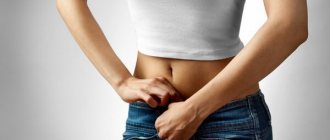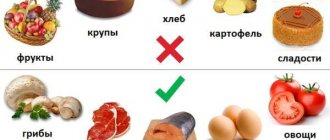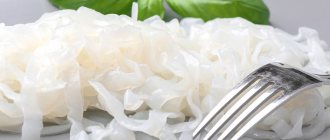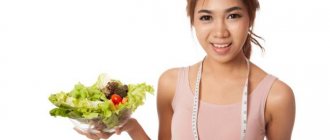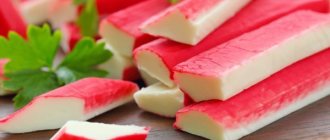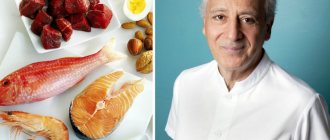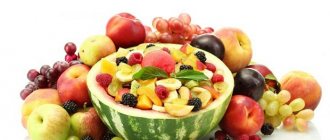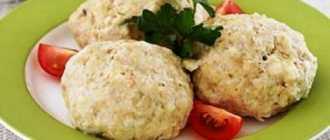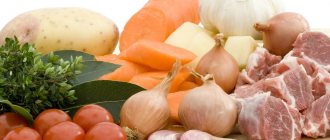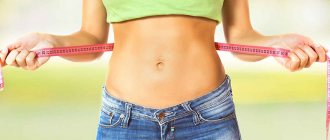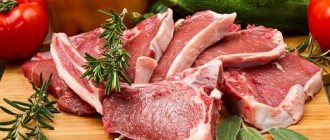Diets are one of the simplest and most common options for losing weight. In order to lose weight for some event, and the extra pounds are gone for a long time, women and men resort to food restrictions. But nutritionists warn: some diets can seriously harm the body. And then, instead of a beautiful and slender figure, we will receive a referral to a doctor.
How to lose weight safely? With a protein diet it's easy! There is no need to exhaust yourself with constant refusals to eat and feel hungry all the time. Protein foods, which form the basis of the diet with this diet, are quite filling. At the same time, it provides the energy necessary for the body, and the person does not feel lethargic or depressed.
In addition, this is a completely safe way to lose weight - you will not experience a deficiency of any vitamins and lose muscle mass.
Revolutionary Atkins Diet: Basic Concepts
The main source of energy for humans is carbohydrates obtained from food. They can be divided into 2 basic groups: highly and poorly absorbed by the body.
Highly digestible (fast) carbohydrates include:
- sugar (pure sugar, honey, sweet fruits and berries);
- starches (legumes and grain products, flour, cereals, pasta, potatoes and starchy vegetables such as beets, carrots).
Poorly digestible (slow) carbohydrate is fiber, which is rich in:
- vegetables (especially green);
- fruits;
- whole grain.
From carbohydrates, the body synthesizes glucose, which is carried throughout the body in the blood, nourishes the cells of the brain, muscle tissue and internal organs and enriches them with energy.
With a reduced intake of carbohydrates from food, blood glucose levels drop, and the body synthesizes ketone bodies to obtain energy. Ketones trigger a process in which your body's body fat is used to produce energy. This type of metabolism is called ketosis.
Conclusion
The Atkins diet puts the body into a state in which fat deposits begin to disappear very quickly. However, the menu cannot be called a balanced one, and it also limits the intake of vitamins into the body. Therefore, you can adhere to this diet only after consulting a nutritionist. It is quite possible that the doctor will recommend a different method of combating excess weight.
Author of the article:
Kuzmina Vera Valerievna |
Endocrinologist, nutritionist Education: Diploma of the Russian State Medical University named after. N.I. Pirogov, specialty “General Medicine” (2004). Residency at the Moscow State Medical and Dental University, diploma in Endocrinology (2006). Our authors
General rules of the Atkins protein diet
The main rule of the Atkins system is to reduce carbohydrates in your diet. The amount of proteins and fats, as well as the caloric content of the diet and the size of portions are at the discretion of the person losing weight.
At the same time, Robert Atkins, as a professional doctor, was guided by the main principle of medical ethics - do no harm.
The main rules of the diet are:
- counting the amount of carbohydrates consumed, observing their acceptable range;
- complete refusal of fast carbohydrates;
- mandatory consumption of plant fiber (from the list of permitted products);
- high-quality protein foods are the basis of the diet;
- the predominance of mono- and polyunsaturated fats (mainly vegetable) over saturated (animal);
- compliance with the drinking regime.
SEARCHING FOR PRIMARY SOURCES
For the main search of sources, the Internet resource PubMed was used, as well as the ELIBRARY database for the last 10 years. Springer and Elsevier websites were used to access the full text of articles. The review included sources of information that addressed dietary choices in different patient groups. Information requests included the following set of keywords: “protein, high-protein diet, kidney, muscles, diabetes mellitus, cardiovascular diseases.”
Differences between the classic Atkins diet and the modified one
It is important to distinguish between classic and modified types of diet. The modified Atkins diet is used medically in the treatment of epilepsy.
The practice used to treat this disease is a high-fat ketogenic diet. The ratio of fats/proteins+carbohydrates is approximately 4 to 1. Despite the severe impact of this type of diet on the body, in some cases only the keto diet can reduce the number and severity of epileptic seizures.
The Modified Atkins Diet is used to transition from an everyday diet to a ketogenic diet. It implies maximum saturation of the menu with fats while simultaneously reducing carbohydrates; the share of fats in the diet is about 50%.
Using the modified Atkins diet for weight loss is not recommended, as excessive consumption of fatty protein foods can negatively affect your health.
Cooking Rules
Protein foods for the diet must be prepared in such a way that in the process it does not become even more high in calories. Dishes should not be fried or baked in oil or sauces.
If you need to fry a dish, you can do this in a non-stick frying pan. The best ways to prepare dishes are baking, boiling and stewing, as well as grilling. Food prepared in this way is no worse than fried food.
Meat or fish can be baked separately or with vegetables. You can also prepare vegetable salads - raw greens are much healthier. Spices, soy sauce and a little salt are added to the dishes.
Benefits of a Low Carb Diet
The benefits of the diet include:
- High efficiency - up to 8 kg in the first month.
- Easy tolerability due to lack of hunger.
- Reduced appetite due to the absence of surges in blood glucose levels.
- Prevention of diabetes by relieving excessive stress on the pancreas.
- No loss of muscle mass.
- Improved skin condition.
- Possibility of observance in various life situations (at the festive table, at a party, at a picnic).
- Sustainable results (since weight loss occurs due to fat mass, not water).
Losing weight without fasting
The author of the method himself said that his method is effective because it does not force those losing weight to live from hand to mouth. Indeed, according to reviews, the diet for weight correction is quite filling.
And there are recipes for both the lazy and those who like to tinker in the kitchen. So, you can simply boil fish or chicken. And if you want something like that, stuff the eggs with tuna and the tomatoes with cottage cheese and herbs. The advantage is that the loser writes out the daily menu at his own discretion.
Yes, the weight does not melt away in three days. Losing weight can continue for many months. But the diet promises permanent results and minimal health risks.
Robert Atkins insisted: in addition to losing weight, his diet improves the condition of the body as a whole. Toxins are eliminated, sugar levels are normalized and the risk of diabetes is reduced. In addition, by adopting a new way of eating, a person can get rid of depression. Migraines and fatigue disappear, muscle and joint pain disappear.
The diet's official website claims that following Atkins' advice, more than 50 million people around the world have been able to normalize their weight. Celebrities also lost weight with its help. For example, American actress and star of “Friends” Jennifer Aniston. It was for the role of Rachel that she lost 15 kg. Interestingly, it is the Atkins method that underlies the Kremlin diet, which is sensational in Russia.
Flaws
The main disadvantages of the diet are:
- Deterioration of health at the stage of adaptation to a new type of metabolism (thirst, metallic taste in the mouth, weakness, dizziness).
- Lack of vitamins due to a limited amount of vegetables and fruits in the diet.
- Lack of glucose, which is the main fuel for the brain.
- Abuse of protein foods and insufficient fiber intake may cause constipation.
- The need for constant carbohydrate counting.
Side effects
A minimal intake of carbohydrate foods into the body is associated with the following complications:
- Deterioration in performance.
- The appearance of kidney stones.
- Deterioration of brain function.
- The likelihood of developing gout.
- Increased risk of developing osteoporosis.
- Increased blood cholesterol levels.
- Increased likelihood of developing cancer.
- Increased risk of developing cardiovascular diseases.
Contraindications to the diet
The Atkins diet, a 14-day menu for which involves a large amount of animal protein, is contraindicated:
- Pregnant and lactating women.
- People with chronic diseases of the heart, kidneys, liver and other organs.
- Children under 18 years old.
Diet stages
The Atkins diet (the menu for 14 days will be presented below) consists of 4 consecutive stages. Each phase has its own purpose, duration and list of permitted products.
Phase I (induction)
Phase 1 of the diet is key in the process of starting ketosis. Induction switches the body to a mode of obtaining energy from its own adipose tissue. Duration of phase 1 – 14 days.
This is the most strict stage, the menu is limited to consuming no more than 20 g of carbohydrates per day.
Allowed for consumption in any quantity (until you feel full):
- lean meat, poultry;
- fish;
- eggs.
In limited quantities within the permissible 20 g of carbohydrates per day:
- non-starchy vegetables and herbs;
- mushrooms;
- olives;
- cheeses.
It is better to abstain from dairy and fermented milk products or consume them in minimal quantities.
It is recommended to season salads with any vegetable oil. Mayonnaise is acceptable in quantities of no more than 1-2 tbsp. in a day. The main condition is the absence of sugar and starch (you can prepare it yourself at home).
During phase 1 of the diet, it is recommended to use a kitchen scale to accurately measure the amount of carbohydrates taken with food. Measuring errors are one of the most common causes of stagnation in weight loss.
At the beginning of the diet, there may be a deterioration in well-being (loss of strength, lack of energy), as well as “carbohydrate withdrawal” in lovers of sweets. Usually, by the end of the first week, a restructuring of the body occurs, and all unpleasant sensations disappear.
Due to the low amount of vegetables in the diet and the lack of fruits and berries, vitamin deficiency may develop. It is optimal to start taking a multivitamin complex at the same time as starting the diet.
Weight loss at the induction stage occurs at a fairly high rate, since a very limited amount of carbohydrates enters the body with food.
Phase II (stable weight loss)
Phase 2 of the Atkins diet is the longest phase. His goal is active weight loss almost to the desired numbers.
At this stage, the amount of carbohydrates in the daily diet gradually (5-10 g per week) increases to 40.
The menu includes such products as:
- some starchy vegetables;
- dairy and fermented milk products;
- fruits and berries with a low amount of carbohydrates;
- nuts and seeds.
It is important to consistently introduce new products to the menu and monitor how they affect the rate of weight loss. At stage 2, the body is already well adapted to the diet, and therefore you can add fairly intense physical activity.
It is also important to monitor skin tone, as intensive weight loss can lead to sagging and stretch marks. It is good to use contrast showers, massages and other procedures.
Phase III (stabilization)
Phase 3 of the diet begins when there are 1-2 kg left on the scale. The goal of this stage is to get rid of the last extra pounds and begin the transition to the weight maintenance stage.
The most important thing is to experimentally set a carbohydrate level at which the weight will remain at a stable level. This indicator is individual for each person.
It depends on many factors:
- age;
- body type;
- metabolic rate;
- daily level of physical activity.
For women not engaged in physical labor, the average figure is 60 g per day.
You can gradually introduce any foods that are not on the prohibited list into your diet and gradually increase your daily carbohydrate intake.
Phase IV (consolidation)
Phase 4 of the Atkins diet is a nutritional system that you can stick to for the rest of your life.
During phase 3, the amount of carbohydrates is determined, which allows you to maintain your weight within the desired range. The body is adapted to a low-carbohydrate diet and does not need fast carbohydrates. The goal has been achieved, the reflection in the mirror is pleasing.
The main danger of this stage is the lack of strict frameworks. This can lead to uncontrolled consumption of carbohydrates and weight gain again.
The main recommendation is to continue to control your weight by weighing yourself once a week. If you gain 2-3 extra kg, you should quickly reduce the carbohydrate level to 20-30 g per day. As a rule, a couple of weeks is enough to normalize weight.
Adviсe
Tips for losing weight on the Atkins diet:
- It is necessary to control the chemical composition and amount of carbohydrates in food. Sometimes there can be a lot of them even in the most unexpected dishes.
- Side dishes that a person is used to eating every day should be replaced with vegetables whenever possible. It is better to give up potatoes and cereals altogether, eating vegetable salads along with meat.
- A table of calorie content of foods and the content of essential nutrients in them should always be immediately available. You can print it out and take it with you to work. This will allow you to control the amount of carbohydrates you eat per day.
- The Atkins diet is designed to be followed for life.
- The Kremlin diet is the Russian equivalent of the Atkins diet. However, it is not as developed, and its menu is less balanced. Therefore, preference should be given to the Atkins diet.
- While dieting, you should definitely exercise.
Table of allowed products for every day
The Atkins diet allows the consumption of a large list of foods. It is recommended that the menu for the 14 days of the induction start period be composed of products marked with an asterisk.
| Product | Amount of carbohydrates/100 g | Product | Amount of carbohydrates/100 g |
| Meat, poultry | Meat products | ||
| Mutton* | 0 | Ham, bacon, meat products, smoked meats* | 0 |
| Beef* | 0 | Jellied Meat* | 0,3 |
| Goose* | 0 | Boiled sausage* | 1,5 |
| Rabbit* | 0 | Sausages* | 1,5 |
| Chicken* | 0 | Sausages* | 1,5 |
| Beef liver* | 0 | Liver sausage* | 2,2 |
| Salo* | 0 | Mushrooms | |
| Pork* | 0 | Fresh champignons* | 0,1 |
| By-products* | 0 | Fresh butter* | 0,5 |
| Veal* | 0 | Fresh honey mushrooms* | 0,5 |
| Duck* | 0 | Fresh saffron milk caps* | 0,5 |
| Minced meat/chicken* | 0 | Fresh milk mushrooms* | 1 |
| Beef/pork tongue* | 0 | Fresh chanterelles* | 1,5 |
| Chicken liver* | 0,3 | Nuts | |
| Fish, seafood | Cashew | 7,5 | |
| Fresh, dried, dried fish* | 0 | Hazelnut | 9,9 |
| Cod liver in oil* | 0 | Pine nuts | 10 |
| Canned fish in oil* | 0 | Almond | 11 |
| Red caviar* | 0 | Walnuts | 12 |
| Shrimps* | 0 | Pumpkin seeds | 12 |
| Lobster* | 1 | Peanut | 15 |
| Seafood cocktail (canned)* | 1,3 | Pistachios | 15 |
| Squid* | 1,4 | Dairy and fermented milk products | |
| Crabs* | 2 | Curd grain in cream* | 2,4 |
| Mussels* | 5 | Cream 35%* | 3 |
| Oysters* | 7 | Fat cottage cheese* | 3 |
| Egg | Low-fat cottage cheese* | 3,2 | |
| Quail egg 1 pc.* | 0,4 | Sour cream 30%* | 3,2 |
| Chicken egg 1 pc.* | 0,5 | Sour cream 20%* | 3,4 |
| Cheeses | Sour cream 15%* | 3,6 | |
| Adygei cheese* | 0 | Yogurt 1.5% unsweetened* | 3,6 |
| Sausage cheese* | 0 | Cream 20%* | 3,7 |
| Cheese Chechil-Spaghetti* | 0 | Kefir 2.5%* | 3,8 |
| Brynza* | 0 | Low-fat kefir* | 4 |
| Hard cheese* | 0,3 | Cream 10%* | 4 |
| Curd cheese* | 1,1 | Acidophilus* | 4,1 |
| Chees Feta* | 2,3 | Curdled milk* | 4,1 |
| Processed Cheese | 6,5 | Ryazhenka* | 4,2 |
| Fats, oils | Milk 3.2%* | 4,7 | |
| Vegetable oil | 0 | Skim milk* | 4,8 |
| Butter | 1 | Alcohol | |
| Ghee | 0,6 | Vodka | 0 |
| Margarine | 1 | Cognac, brandy | 0 |
| Vegetables, greens | Rum | 0 | |
| Sauerkraut* | 2 | Tequila | 0 |
| Cabbage* | 2 | Dry wine | 0,3 |
| Lettuce* | 2 | Champagne Brut | 0,6 |
| Celery greens* | 2 | Vermouth Extra Dry | 2,7 |
| Spinach* | 2,3 | Beverages | |
| Sea cabbage (canned)* | 2,5 | Sugar free coffee* | 0 |
| Asparagus* | 2,6 | Mineral water* | 0 |
| Fresh cucumbers* | 2,8 | Tea without sugar* | 0 |
| Rhubarb* | 2,9 | Pepsi and Cola Light | 0 |
| Watercress* | 3 | Fruits, berries | |
| Sorrel* | 3 | Lemon | 3,6 |
| Tomatoes* | 3,2 | Blackberry | 4,5 |
| Green onion* | 3,5 | Cranberry | 4,5 |
| Pickled cucumbers* | 3,8 | Sea buckthorn | 5 |
| Zucchini, squash* | 4 | Wild strawberry | 6 |
| Pumpkin* | 4 | Cloudberry | 6 |
| Radish* | 4,1 | Cherry plum | 6,5 |
| Cauliflower* | 4,9 | Grapefruit | 6,5 |
| Eggplant* | 5 | Strawberry | 6,7 |
| White cabbage* | 5 | Blueberry | 7 |
| Savoy cabbage* | 5 | Currant | 7,5 |
| Olives (canned)* | 5 | Cowberry | 8 |
| Olives (canned)* | 5 | Raspberries | 8 |
| Turnip* | 5 | Blueberry | 8 |
| Garlic* | 5 | Quince | 8,1 |
| Bulgarian pepper* | 5,3 | Garden strawberries | 8,1 |
| Dill* | 5,6 | Orange | 8,4 |
| Avocado* | 6 | Mandarin | 8,6 |
| Broccoli* | 6 | Apricots | 9 |
| Cheremsha* | 6 | Watermelon | 9 |
| Radish* | 6,5 | Gooseberry | 9 |
| Celery (stem)* | 6,5 | Kiwi | 9,3 |
| Carrot | 6,9 | Peaches | 9,4 |
| Artichokes | 7 | Pear | 9,5 |
| Swede | 7 | Apples | 9,5 |
| Green beans* | 7,1 | Melon | 9,6 |
| Horseradish (root)* | 7,5 | Dogwood | 9,7 |
| Brussels sprouts* | 8 | Garden plum | 9,9 |
| Kohlrabi* | 8 | Fresh rosehip | 10 |
| Parsley (greens)* | 8,1 | Cherry | 10,3 |
| Bulb onions* | 9 | Cherries | 10,5 |
| Leek* | 9 | Pomegranate | 11,5 |
| Beet | 9,8 | A pineapple | 11,8 |
| Sauces | Mulberry | 12,7 | |
| Mayonnaise without starch with sweetener* | 1,3 | Nectarine | 13 |
| Mayonnaise Provencal | 2,6 | Persimmon | 13 |
| Hrenoder | 5,2 | Figs | 13,9 |
| Apple Vinegar | 7,2 | Mango | 14,1 |
| White wine vinegar | 7,5 | ||
| Mustard (sauce) | 11 | ||
| Soy sauce | 11 | ||
| Tomato paste | 19 | ||
Table of prohibited products
Low-carb nutrition systems prohibit the consumption of any foods containing pure sugar . When making purchases, you should pay attention to the composition information posted on the labels.
According to the menu and recommendations, in the first 14 days of the Atkins diet you need to completely eliminate foods with high GI
During all phases of the diet the following are prohibited:
| Product | Amount of carbohydrates/100 g | Product | Amount of carbohydrates/100 g |
| Sweets | Fruits, dried fruits | ||
| Sugar | 99,5 | Dried cherries | 73 |
| Caramel | 92,1 | Dried peaches | 68,5 |
| Paste | 80,4 | Dried dates | 68 |
| Marshmallow | 78,3 | Raisin | 66 |
| Marmalade | 77,7 | Prunes | 58 |
| Honey | 75 | Dried apricots | 55 |
| Strawberry jam | 71 | Dried apricots | 53 |
| Raspberry jam | 71 | Dried pear | 49 |
| Gingerbread | 71 | Dried apples | 45 |
| Simple dryers | 68 | Bananas | 21,8 |
| Baranki | 66 | Dried rose hips | 21 |
| Apple jam | 66 | Coconut | 20 |
| Cream crackers | 66 | Grape | 15 |
| Meringue | 62,6 | Cereals, beans | |
| Chocolate white | 58,3 | Cornflakes | 79,4 |
| Bagels | 58 | Corn grits | 75 |
| Sunflower halva | 54 | Pearl barley | 73,7 |
| Milk chocolate | 54 | Rice cereal | 73,7 |
| Chocolate candies | 51 | Semolina | 73,3 |
| Butter pastries | 51 | Barley grits | 71,7 |
| Waffles with filling | 40 | Millet | 69,3 |
| Ice cream popsicle | 20 | Oatmeal cereal | 68,3 |
| Milk ice cream | 15,5 | Oat groats | 65,4 |
| Ice cream sundae | 15 | Chickpeas | 61 |
| Diabetic jam | 3 | Lentils | 60,1 |
| Bread, flour, pasta, potatoes | Dried peas | 45 | |
| Corn starch | 85 | Soybeans | 35,5 |
| Pasta | 77 | Alcohol | |
| Wheat flour | 75 | Liquor | 45 |
| Vermicelli | 71,5 | Sweet vermouth | 15,9 |
| Corn flour | 70 | Sweet wine | 5,9 |
| Rye flour | 64 | Beer (average) | 4,8 |
| Pete | 60,4 | Beverages | |
| Rye bran | 56,8 | Coca Cola | 51,17 |
| Armenian lavash | 56 | Fanta | |
| Table loaf | 49,4 | Orange juice (packaged) | 12 |
| Hearth bread | 37,6 | Multifruit juice (packaged) | 12 |
| Wheat bran | 35 | Apple juice (packaged) | 12 |
| Rye bread | 34 | Tomato juice (packaged) | 6 |
| Soy flour | 16 |
Atkins diet menu for 14 days
The Atkins diet, the 14-day menu for which is proposed below, is easy and enjoyable to follow due to the delicious and satisfying dishes in the diet. The menu for days 1-7 contains up to 20 g of carbohydrates and is suitable for phase I (induction).
For 8-14 days, a daily diet containing 30 to 40 g of carbohydrates is proposed - it can be used during phase II of the diet (active weight loss). The calculations show the weight of the products before heat treatment, unless otherwise indicated.
Day 1
| Menu | Ingredients | Weight, g | Amount of carbohydrates/100 g | Total carbohydrates |
| Breakfast: sauerkraut salad, boiled sausages | sauerkraut | 150 | 2 | 3,0 |
| vegetable oil | 10 | 0 | — | |
| sausages 3 pcs. | 150 | 1,5 | 2,3 | |
| 5,3 | ||||
| Lunch: Seafood salad | iceberg lettuce | 150 | 2 | 3,0 |
| egg, pcs. | 1 | 0,5 | 0,0 | |
| fresh cucumbers | 100 | 2,8 | 2,8 | |
| seafood cocktail | 100 | 1,3 | 1,3 | |
| mayonnaise without starch with sweetener | 15 | 1,3 | 0,2 | |
| Lazy cabbage rolls with Chinese cabbage | minced meat | 250 | 0 | — |
| cabbage | 150 | 2 | 3,0 | |
| sour cream 20% | 50 | 3,4 | 1,7 | |
| 12,0 | ||||
| Dinner: Champignons stuffed with tomatoes and cheese | large champignons (caps) | 150 | 0,1 | 0,2 |
| Tomatoes | 50 | 3,2 | 1,6 | |
| hard cheese | 50 | 0,3 | 0,2 | |
| vegetable oil | 5 | 0 | — | |
| 1,9 | ||||
| Total: | 19,2 |
Day 2
| Menu | Ingredients | Weight, g | Amount of carbohydrates/100 g | Total carbohydrates |
| Breakfast: Scrambled eggs with tomato and cheese | egg, pcs. | 3 | 0,5 | 0,0 |
| Tomatoes | 100 | 3,2 | 3,2 | |
| hard cheese | 50 | 0,3 | 0,2 | |
| vegetable oil | 10 | 0 | — | |
| 3,4 | ||||
| Lunch: Cabbage salad with tomatoes and bell peppers | White cabbage | 150 | 5 | 7,5 |
| Tomatoes | 50 | 3,2 | 1,6 | |
| Bulgarian pepper | 50 | 5,3 | 2,7 | |
| vegetable oil | 10 | 0 | — | |
| Rabbit stewed in sour cream | rabbit meat | 250 | 0 | — |
| dry white wine | 150 | 0,3 | 0,5 | |
| sour cream 15% | 50 | 3,6 | 1,8 | |
| Dill | 20 | 5,6 | 1,1 | |
| vegetable oil | 10 | 0 | — | |
| 15,1 | ||||
| Dinner: Chicken aspic | chicken leg | 300 | 0 | — |
| egg, pcs. | 1 | 0,5 | 0,0 | |
| Garlic | 5 | 5 | 0,3 | |
| Gelatin | 20 | 0,7 | 0,1 | |
| Mustard | 15 | 11 | 1,7 | |
| 2,0 | ||||
| Total: | 20,5 |
Day 3
| Menu | Ingredients | Weight, g | Amount of carbohydrates/100 g | Total carbohydrates |
| Breakfast: Egg stuffed with saury | egg, pcs. | 3 | 0,5 | 0,0 |
| canned saury | 100 | 0 | — | |
| mayonnaise without starch with sweetener | 15 | 1,3 | 0,2 | |
| Dill | 15 | 5,6 | 0,8 | |
| 1,1 | ||||
| Lunch: Low-carbohydrate rassolnik (calculated per serving) | chicken drumstick, pcs. | 1 | 0 | — |
| celery (stem) | 20 | 6,5 | 1,3 | |
| bulb onions | 20 | 9 | 1,8 | |
| pickled cucumbers | 50 | 3,8 | 1,9 | |
| parsley (greens) | 10 | 8,1 | 0,8 | |
| vegetable oil | 5 | 0 | — | |
| Boiled green beans Pink salmon baked under a cheese cap | green beans | 150 | 5,7 | 8,6 |
| butter | 10 | 0,7 | 0,1 | |
| pink salmon fillet | 200 | 0 | — | |
| hard cheese | 50 | 0,3 | 0,2 | |
| vegetable oil | 10 | 0 | — | |
| 14,6 | ||||
| Dinner: Chicken julienne with mushrooms | chicken fillet | 150 | 0 | — |
| Champignon | 100 | 0,1 | 0,1 | |
| bulb onions | 30 | 9 | 2,7 | |
| hard cheese | 50 | 0,3 | 0,2 | |
| sour cream 15% | 25 | 3,6 | 0,9 | |
| 3,9 | ||||
| Total: | 19,5 |
Day 4
| Menu | Ingredients | Weight, g | Amount of carbohydrates/100 g | Total carbohydrates, g |
| Breakfast: Egg stuffed with saury | egg, pcs. | 3 | 0,5 | 0,0 |
| canned saury | 100 | 0 | — | |
| mayonnaise without starch with sweetener | 15 | 1,3 | 0,2 | |
| Dill | 15 | 5,6 | 0,8 | |
| 1,1 | ||||
| Lunch: Green salad with sour cream | leaf lettuce | 150 | 2 | 3 |
| green onion | 15 | 3,5 | 0,5 | |
| Dill | 15 | 5,6 | 0,8 | |
| Parsley | 15 | 8,1 | 1,2 | |
| sour cream 20% | 25 | 3,4 | 0,9 | |
| Meat and cabbage casserole (per 1 serving) | minced meat | 200 | 0 | — |
| White cabbage | 150 | 5 | 7,5 | |
| egg, pcs. | 1 | 0,5 | 0,0 | |
| sour cream 15% | 25 | 3,6 | 0,9 | |
| vegetable oil | 10 | 0 | — | |
| 14,8 | ||||
| Dinner: Salmon in omelet | salmon fillet | 200 | 0 | — |
| egg, pcs. | 2 | 0,5 | 0,0 | |
| milk 3.2% | 50 | 4,7 | 2,4 | |
| Dill | 15 | 5,6 | 0,8 | |
| butter | 15 | 0,7 | 0,1 | |
| 3,3 | ||||
| Total: | 19,2 |
Day 5
| Menu | Ingredients | Weight, g | Amount of carbohydrates/100 g | Total carbohydrates, g |
| Breakfast: Scrambled eggs with champignons | egg, pcs. | 3 | 0,5 | 0,0 |
| Champignon | 50 | 0,1 | 0,1 | |
| vegetable oil | 10 | 0 | — | |
| 0,1 | ||||
| Lunch: Salad of Chinese cabbage, chicken and bell pepper | cabbage | 100 | 2 | 2,0 |
| boiled chicken fillet | 50 | 0 | — | |
| Bulgarian pepper | 50 | 5,3 | 2,7 | |
| mayonnaise without starch with sweetener | 15 | 1,3 | 0,2 | |
| Fried eggplants. Chicken wings, baked | Eggplant | 150 | 5 | 7,5 |
| Garlic | 3 | 5 | 0,2 | |
| sour cream 15% | 25 | 3,6 | 0,9 | |
| chicken wings | 250 | 0 | — | |
| vegetable oil | 20 | 0 | — | |
| 13,4 | ||||
| Dinner: Chicken pieces with steamed vegetables | minced chicken | 200 | 0 | — |
| Bulgarian pepper | 50 | 5,3 | 2,7 | |
| bulb onions | 25 | 9 | 2,3 | |
| Spinach | 25 | 2,3 | 0,6 | |
| 5,5 | ||||
| Total: | 18,9 |
Day 6
| Menu | Ingredients | Weight, g | Amount of carbohydrates/100 g | Total carbohydrates, g |
| Breakfast: Ham and eggs | egg, pcs. | 3 | 0,5 | 0,02 |
| Ham | 100 | 0 | — | |
| vegetable oil | 10 | 0 | — | |
| 0,02 | ||||
| Lunch: Salad with beef and pickled cucumbers | leaf lettuce | 100 | 2 | 2,0 |
| Boiled beef | 50 | 0 | — | |
| pickled cucumbers | 50 | 3,8 | 1,9 | |
| mayonnaise without starch with sweetener | 15 | 1,3 | 0,2 | |
| Vegetable stew with chicken | Zucchini | 150 | 4 | 6,0 |
| Bulgarian pepper | 50 | 5,3 | 2,7 | |
| Parsley | 10 | 8,1 | 0,8 | |
| chicken fillet | 75 | 0 | — | |
| vegetable oil | 10 | 0 | — | |
| 13,6 | ||||
| Dinner: Vegetable salad Turkey steak | fresh cucumbers | 75 | 2,8 | 2,1 |
| Bulgarian pepper | 75 | 5,3 | 4,0 | |
| turkey fillet | 200 | 0 | — | |
| vegetable oil | 20 | 0 | — | |
| 6,1 | ||||
| Total: | 19,6 |
Day 7
| Menu | Ingredients | Weight, g | Amount of carbohydrates/100 g | Total carbohydrates, g |
| Breakfast: Ham and eggs | egg, pcs. | 3 | 0,5 | 0,02 |
| Ham | 100 | 0 | — | |
| vegetable oil | 10 | 0 | — | |
| 0,02 | ||||
| Lunch: Greek salad | fresh cucumbers | 75 | 2,8 | 2,1 |
| Tomatoes | 75 | 3,2 | 2,4 | |
| Olives | 30 | 5 | 1,5 | |
| Chees Feta | 50 | 2,3 | 1,2 | |
| olive oil | 10 | 0 | — | |
| Low-carb okroshka (per serving) | Boiled sausage Doctorskaya | 70 | 1,5 | 1,1 |
| green onion | 10 | 3,5 | 0,4 | |
| Dill | 10 | 5,6 | 0,6 | |
| Radish | 15 | 4,1 | 0,6 | |
| egg, pcs. | 1 | 0,5 | 0,0 | |
| fresh cucumbers | 50 | 2,8 | 1,4 | |
| mineral water | 250 | 0 | — | |
| Mustard | 10 | 11 | 1,1 | |
| sour cream 20% | 25 | 3,4 | 0,9 | |
| mayonnaise without starch with sweetener | 25 | 1,3 | 0,3 | |
| 13,4 | ||||
| Dinner: Squid stuffed with champignons | Squid | 250 | 1,4 | 3,5 |
| Champignon | 150 | 0,1 | 0,2 | |
| bulb onions | 30 | 9 | 2,7 | |
| butter | 30 | 0,7 | 0,2 | |
| 6,6 | ||||
| Total: | 20,0 |
Day 8
| Menu | Ingredients | Weight, g | Amount of carbohydrates/100 g | Total carbohydrates, g |
| Breakfast: Cottage cheese with sour cream and nuts | cottage cheese 9% | 200 | 3 | 6,0 |
| sour cream 15% | 100 | 3,6 | 3,6 | |
| Cashew | 50 | 7,5 | 3,8 | |
| 13,4 | ||||
| Lunch: Sauerkraut salad with cucumber and herbs | sauerkraut | 150 | 2 | 3,0 |
| fresh cucumbers | 100 | 2,8 | 2,8 | |
| Dill | 15 | 5,6 | 0,8 | |
| vegetable oil | 10 | 0 | — | |
| Mackerel baked with vegetables in foil | Mackerel | 250 | 0 | — |
| bulb onions | 30 | 9 | 2,7 | |
| Tomatoes | 50 | 3,2 | 1,6 | |
| Bulgarian pepper | 50 | 5,3 | 2,7 | |
| Lemon | 10 | 3,6 | 0,4 | |
| 14,0 | ||||
| Dinner: Avocado salad with shrimp Curd cheese | boiled peeled shrimp | 100 | 0 | — |
| Arugula | 40 | 2,1 | 0,8 | |
| Avocado | 50 | 6 | 3,0 | |
| Cherry tomatoes | 60 | 3,2 | 1,9 | |
| Garlic | 3 | 5 | 0,2 | |
| olive oil | 10 | 0 | — | |
| curd cheese | 140 | 1,1 | 1,5 | |
| 7,5 | ||||
| Total: | 34,8 |
Day 9
| Menu | Ingredients | Weight, g | Amount of carbohydrates/100 g | Total carbohydrates, g |
| Breakfast: Ryazhenka and strawberry smoothie | Ryazhenka | 200 | 4,2 | 8,4 |
| frozen strawberries | 50 | 6,7 | 3,4 | |
| 11,8 | ||||
| Lunch: Cabbage soup with meatballs and sour cream (per serving) | minced meat | 30 | 0 | — |
| bulb onions | 15 | 9 | 1,4 | |
| White cabbage | 30 | 5 | 1,5 | |
| Bulgarian pepper | 25 | 5,3 | 1,3 | |
| celery (stem) | 15 | 6,5 | 1,0 | |
| dill | 10 | 5,6 | 0,6 | |
| vegetable oil | 5 | 0 | — | |
| sour cream 20% | 25 | 3,4 | 0,9 | |
| Cauliflower baked with cheese, boiled tongue | cauliflower | 150 | 4,9 | 7,4 |
| hard cheese | 30 | 0,3 | 0,1 | |
| vegetable oil | 10 | 0 | — | |
| beef tongue | 50 | 0 | — | |
| 14,0 | ||||
| Dinner: Cottage cheese with vegetables and herbs | cottage cheese 9% | 200 | 3 | 6,0 |
| fresh cucumbers | 75 | 2,8 | 2,1 | |
| tomatoes | 50 | 3,2 | 1,6 | |
| dill | 15 | 5,6 | 0,8 | |
| soy sauce | 20 | 11 | 2,2 | |
| mayonnaise without starch with sweetener | 15 | 1,3 | 0,2 | |
| 12,9 | ||||
| Total: | 38,7 |
Day 10
| Menu | Ingredients | Weight, g | Amount of carbohydrates/100 g | Total carbohydrates, g |
| Breakfast: Egg pancakes stuffed with chicken and mushrooms | egg, pcs. | 4 | 0,5 | 0,0 |
| milk 3.2% | 75 | 4,7 | 3,5 | |
| chicken fillet | 75 | 0 | — | |
| Champignon | 75 | 0,1 | 0,1 | |
| bulb onions | 50 | 9 | 4,5 | |
| vegetable oil | 30 | 0 | — | |
| 8,1 | ||||
| Lunch: Fresh vegetable salad | leaf lettuce | 100 | 2 | 2,0 |
| tomatoes | 50 | 3,2 | 1,6 | |
| fresh cucumbers | 50 | 2,8 | 1,4 | |
| dill | 15 | 5,6 | 0,8 | |
| olive oil | 10 | 0 | — | |
| Bigus with beef | beef | 200 | 0 | — |
| White cabbage | 100 | 5 | 5,0 | |
| bulb onions | 20 | 9 | 1,8 | |
| carrot | 20 | 6,9 | 1,4 | |
| vegetable oil | 10 | 0 | — | |
| 14,0 | ||||
| Dinner: Stuffed zucchini | zucchini | 200 | 4 | 8,0 |
| minced chicken | 200 | 0 | — | |
| bulb onions | 40 | 9 | 3,6 | |
| dill | 15 | 5,6 | 0,8 | |
| 12,4 | ||||
| Total: | 34,5 |
Day 11
| Menu | Ingredients | Weight, g | Amount of carbohydrates/100 g | Total carbohydrates, g |
| Breakfast: Cottage cheese casserole with berry sauce | cottage cheese 9% | 200 | 3 | 6,0 |
| egg, pcs. | 1 | 0,5 | 0,0 | |
| sweetener | taste | 0 | — | |
| butter | 20 | 1 | 0,2 | |
| frozen strawberries | 50 | 6,7 | 3,4 | |
| 9,5 | ||||
| Lunch: Cheese appetizer with garlic and tomatoes | tomatoes | 150 | 3,2 | 4,8 |
| hard cheese | 50 | 0,3 | 0,2 | |
| garlic | 3 | 5 | 0,2 | |
| mayonnaise without starch with sweetener | 15 | 1,3 | 0,2 | |
| dill | 15 | 5,6 | 0,8 | |
| Fried zucchini Pork steak | zucchini | 200 | 4 | 8,0 |
| pork (neck or rump) | 200 | 0 | — | |
| vegetable oil | 20 | 0 | — | |
| 14,1 | ||||
| Dinner: Fresh vegetable salad with sour cream Lula kebab | tomatoes | 100 | 3,2 | 3,2 |
| fresh cucumbers | 100 | 2,8 | 2,8 | |
| dill | 15 | 5,6 | 0,8 | |
| sour cream 20% | 25 | 3,4 | 0,9 | |
| minced meat (beef or lamb) | 250 | 0 | — | |
| bulb onions | 30 | 9 | 2,7 | |
| garlic | 3 | 5 | 0,2 | |
| 10,5 | ||||
| Total: | 34,2 |
Day 12
| Menu | Ingredients | Weight, g | Amount of carbohydrates/100 g | Total carbohydrates, g |
| Breakfast: Coconut cheesecakes with sour cream | cottage cheese 9% | 200 | 3 | 6,0 |
| egg, pcs. | 1 | 0,5 | 0,0 | |
| coconut flakes | 20 | 6 | 1,2 | |
| sweetener | taste | 0 | — | |
| vegetable oil | 40 | 0 | — | |
| sour cream 15% | 50 | 3,6 | 1,8 | |
| 9,0 | ||||
| Lunch: Squid salad | squid | 150 | 1,4 | 2,1 |
| egg, pcs. | 1 | 0,5 | 0,0 | |
| fresh cucumbers | 50 | 2,8 | 1,4 | |
| mayonnaise without starch with sweetener | 15 | 1,3 | 0,2 | |
| Boiled broccoli cabbage Azu from beef | broccoli | 150 | 4,5 | 6,8 |
| butter | 15 | 0,7 | 0,1 | |
| beef | 200 | 0 | — | |
| bulb onions | 25 | 9 | 2,3 | |
| pickled cucumbers | 75 | 3,8 | 2,9 | |
| parsley | 15 | 8,1 | 1,2 | |
| vegetable oil | 10 | 0 | — | |
| 16,9 | ||||
| Dinner: Salad Tashkent | Boiled beef | 150 | 0 | — |
| green radish | 50 | 6,5 | 3,3 | |
| pickled cucumbers | 75 | 3,8 | 2,9 | |
| onion (fry in vegetable oil) | 40 | 9 | 3,6 | |
| mayonnaise without starch with sweetener | 15 | 1,3 | 0,2 | |
| 9,9 | ||||
| Total: | 35,8 |
Day 13
| Menu | Ingredients | Weight, g | Amount of carbohydrates/100 g | Total carbohydrates, g |
| Breakfast: Zucchini baked in an omelet | zucchini | 100 | 4 | 4,0 |
| egg, pcs. | 3 | 0,5 | 0,0 | |
| milk 3.2% | 50 | 4,7 | 2,4 | |
| vegetable oil | 10 | 0 | — | |
| 6,4 | ||||
| Lunch: Chicken broth with egg and herbs | chicken broth | 150 | 0 | — |
| chicken fillet | 100 | 0 | — | |
| boiled egg, pcs. | 1 | 0,5 | 0,0 | |
| dill | 20 | 5,6 | 1,1 | |
| parsley | 20 | 8,1 | 1,6 | |
| Cauliflower soufflé Chicken liver stewed in sour cream | cauliflower | 150 | 4,9 | 7,4 |
| egg white, pcs. | 1 | 0 | — | |
| cream 10% | 50 | 4 | 2,0 | |
| butter | 10 | 1 | 0,1 | |
| chicken liver | 200 | 0,3 | 0,6 | |
| sour cream 15% | 30 | 3,6 | 1,1 | |
| vegetable oil | 10 | 0 | — | |
| 13,9 | ||||
| Dinner: Bell peppers stuffed with meat and cheese | bell pepper 2 pcs. | 175 | 5,3 | 9,3 |
| minced meat | 200 | 0 | — | |
| hard cheese | 100 | 0,3 | 0,3 | |
| bulb onions | 30 | 9 | 2,7 | |
| dill | 15 | 5,6 | 0,8 | |
| parsley | 15 | 8,1 | 1,2 | |
| tomatoes | 50 | 3,2 | 1,6 | |
| sour cream 20% | 50 | 3,4 | 1,7 | |
| 17,6 | ||||
| Total: | 37,9 |
Day 14
| Menu | Ingredients | Weight, g | Amount of carbohydrates/100 g | Total carbohydrates, g |
| Breakfast: Greek salad, fried Adyghe cheese | fresh cucumbers | 75 | 2,8 | 2,1 |
| tomatoes | 75 | 3,2 | 2,4 | |
| olives | 30 | 5 | 1,5 | |
| Chees Feta | 50 | 2,3 | 1,2 | |
| olive oil | 10 | 0 | — | |
| Adygei cheese | 150 | 0 | — | |
| vegetable oil | 10 | 0 | — | |
| 7,2 | ||||
| Lunch: Champignon soup with melted cheese | chicken drumstick, pcs. | 1 | 0 | — |
| Champignon | 40 | 0,1 | 0,0 | |
| processed cheese | 50 | 6,5 | 3,3 | |
| bulb onions | 15 | 9 | 1,4 | |
| vegetable oil | 5 | 0 | — | |
| Stewed cabbage Chicken fillet baked in adjika | White cabbage | 200 | 5 | 10,0 |
| bulb onions | 30 | 9 | 2,7 | |
| carrot | 50 | 6,9 | 3,5 | |
| tomatoes | 30 | 3,2 | 1,0 | |
| chicken fillet | 150 | 0 | — | |
| garlic | 3 | 5 | 0,2 | |
| adjika | 20 | 7 | 1,4 | |
| vegetable oil | 20 | 0 | — | |
| 23,3 | ||||
| Dinner: Fresh vegetable salad Baked chicken thigh | leaf lettuce | 100 | 2 | 2,0 |
| tomatoes | 75 | 3,2 | 2,4 | |
| fresh cucumbers | 75 | 2,8 | 2,1 | |
| dill | 15 | 5,6 | 0,8 | |
| olive oil | 10 | 0 | — | |
| chicken thigh without bone | 200 | 0 | — | |
| garlic | 3 | 5 | 0,2 | |
| vegetable oil | 10 | 0 | — | |
| 7,5 | ||||
| Total: | 37,9 |
Recipes for delicious and simple diet dishes
Ear soup with cream
Ingredients (for 4-6 servings):
- fillet of fatty red fish (salmon, trout) – 250 g;
- head, tail, fins and ridge for making broth;
- onion – 100 g;
- cream 20% - 200 ml;
- olive oil – 10 ml;
- dill – 15 g per serving;
- salt, allspice, bay leaf - to taste.
Preparation:
- Place the fish head, tail, spine and fins in a saucepan and fill them with 1.5 liters of water. Add bay leaf and allspice, cover and place on low heat. After boiling, skim off the foam and cook for another 15 minutes.
- While the broth is cooking, finely chop the onion and lightly fry it in olive oil until golden brown.
- Strain the finished broth, add onion and fish fillet, cut into small pieces. Put it back on low heat and cook the fish soup for another 7-10 minutes.
- Turn off the heat, add cream to the pan and salt the dish. Let the soup brew for 15-20 minutes. under a closed lid.
- Before serving, add finely chopped dill to the plate.
Moussaka
Ingredients (for 4-6 servings):
- eggplants – 500 g;
- minced lamb or beef – 500 g;
- tomatoes – 600 g;
- hard cheese – 400 g;
- onion – 100 g;
- garlic - a couple of cloves;
- vegetable oil – 40 ml;
- dill – 15 g per serving;
- sour cream – 25 g per serving;
- salt, spices - to taste.
Preparation:
- Cut the eggplants into rings approximately ½ cm thick. Place them on a dish in a single layer and sprinkle with salt. Leave for half an hour so that the eggplants release juice, which will remove the bitter taste.
- Rinse off the salt and released juice with water and pat the eggplants dry with a napkin. Lightly fry them on both sides in vegetable oil.
- Add finely chopped onion, salt and pepper to the minced meat and mix thoroughly.
- Cut the tomatoes into rings. Finely chop the garlic.
- Grease a baking sheet with vegetable oil and lay out in layers: eggplants – minced meat – tomatoes – chopped garlic. Add a little salt to the vegetable layers. The top layer is eggplant.
- Bake in the oven for 25-30 minutes, then sprinkle with grated cheese and place in the oven for another 5 minutes.
- Serve the dish with sour cream and herbs.
Creamy strawberry ice cream
Ingredients (for 4-6 servings):
- fresh strawberries (you can take frozen) – 3 cups;
- heavy cream 25-35% - 500 ml;
- sweetener - to taste.
Preparation:
- Grind the strawberries in a blender until pureed.
- Pour in the cream and beat at high speed until smooth and thick.
- Add crushed sweetener and mix gently.
- Transfer the mixture to a plastic container and place in the freezer for several hours. During freezing, stir the mixture several times.
- Serve the ice cream slightly thawed.
Salads
Salads complement meat dishes or act as an independent high-protein dish.
Canned tuna salad
Recipe No. 16
Method of preparation:
- Drain excess water from tuna and mash with a fork.
- Cut the cucumber and pepper into small cubes, chop the spinach.
- Mix all ingredients.
***You can use any greens instead of spinach.
Ingredients: - canned tuna in its own juice - 1 can; – cucumber – 80 g; — bell pepper – 40 g; - spinach - 1 bunch.
Chicken and asparagus salad
Recipe No. 17
Cooking method:
- Disassemble the cauliflower into florets, boil until tender along with chicken fillet and chopped asparagus.
- Cut the cucumbers into thin strips.
- Combine all ingredients, add peas, salt and spices.
- Add olive oil and lemon juice and stir.
Ingredients: - chicken fillet - 350 g; – cucumber – 250 g; — cauliflower – 250 g; — celery – 50 g; — canned green peas – 50 g; – asparagus – 100 g; – olive oil – 2 tbsp; – lemon juice – 2 tbsp; - salt, pepper - to taste.
What results can I expect after 2 weeks?
The Atkins diet, whose 14-day menu involves limiting carbohydrates to a minimum, is one of the most effective nutrition systems. But its effect during the first two weeks of compliance will be individual for each person.
The result depends on several factors:
- Initial weight . The higher it is, the more intense weight loss occurs at the initial stage. This is due to the fact that obese people require more energy to maintain their vital functions; their adipose tissue is consumed faster during the induction process.
- Level of physical activity. With physical activity, weight loss occurs faster. During phase 1 of the diet, the body starts the process of ketosis, and in the first days it may experience signs of hypoglycemia (fatigue, thirst, dizziness). It is necessary to choose feasible activities: swimming pool, long walks in the fresh air. As you adapt to the diet, the level of exercise can be increased.
- Maintaining water-salt balance. When eating large amounts of animal protein, it is important to reduce the load on the kidneys and avoid swelling, which can greatly inhibit weight loss. To do this, you should reduce your salt intake to a minimum and drink 1.5 liters of water per day.
To additionally remove excess fluid and toxins from the body, it is useful to visit a bathhouse or sauna. On average, weight loss in the first 14 days is about 3-5 kg.
ADDITIONAL INFORMATION
Sources of financing. The work was carried out with the support of the state assignment AAAA-A20-120011790162-0.
Conflict of interest. The authors declare that there are no obvious or potential conflicts of interest related to the content of this article.
Authors' participation . Altashina M.V. — concept, design of the article, search and analysis of scientific literature on this topic, writing the article; Ivannikova E.V. — concept, design of the article, search and analysis of scientific literature on this topic, making significant corrections to the manuscript; Troshina E.A. — concept, design of the article, making significant corrections to the manuscript. All authors approved the final version of the article before publication and agreed to be responsible for all aspects of the work, including appropriate review and resolution of questions related to the accuracy or integrity of any part of the work.
Reviews from people who have lost weight and nutritionists
Professional nutritionists can best assess the safety of a diet for health, and those who have tried it in practice can tell about its effectiveness.
When evaluating the Atkins system, nutritionists say that the most important thing is the right approach. Despite the absence of restrictions on the amount of proteins and fats in the diet, mayonnaise and alcohol, and other temptations are allowed, you should strive for a reasonable balance of the diet and consumption of natural food. Then following a diet will benefit not only your figure, but also your health.
The main advantage of the Atkins diet over others is the combination of high efficiency and ease of adherence. A delicious menu and the ability to quickly lose several kilograms in just the first 14 days make Dr. Atkins’ system so attractive to those losing weight.
Author: Nadezhda Goss
Article design: Vladimir the Great

